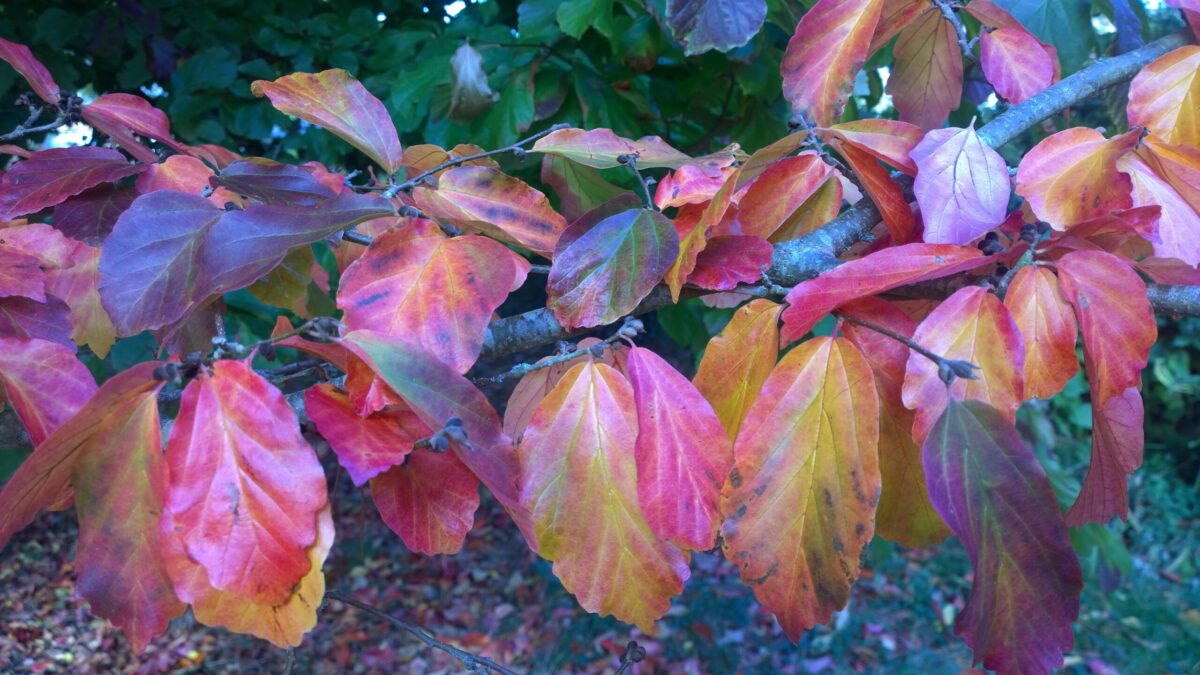
I first saw Parrotia persica (a group of three) in the winter garden at Polesden Lacey and wanted one immediately: the sight of those deep crimson flowers erupting from bare branches was captivating.
As with many flowers at this time of year you must get up close to appreciate their beauty, but then that is the enjoyment of being in the winter garden; it is a stroll of discovery of tiny details on a cold day, as opposed to a blast of unmissable colour in the heat of summer.
The Persian ironwood is a hardy, deciduous, upwardly spreading tree and a member of the same family as the witch hazels – hamamelidaceae. It is often multi-stemmed and although it needs no regular pruning, after a number of years it may benefit from the careful removal of some lower limbs to allow more light in, and to raise the crown.
So there’s no escaping the fact that it’s a big tree (height 6-8 metres after 25 years), but it has a second trick up its sleeve and that is its spectacular autumn display. Every hue of yellow, orange, red, crimson and purple is there, and when the leaves finally drop we have a Persian carpet covering the grass underneath.

So there’s no escaping the fact that it’s a big tree (height 6-8 metres after 25 years), but it has a second trick up its sleeve and that is its spectacular autumn display. Every hue of yellow, orange, red, crimson and purple is there, and when the leaves finally drop we have a Persian carpet covering the grass underneath.
NB Louise has published a beautifully produced book of her plant profiles – A Plant for Each Week of the Year. It costs £9.99 inc P & P and is for sale in our online shop here.
More NB If you’d like a bit more gardening chitchat from the3growbags, please type your email address here and we’ll send you a new post every Saturday morning
